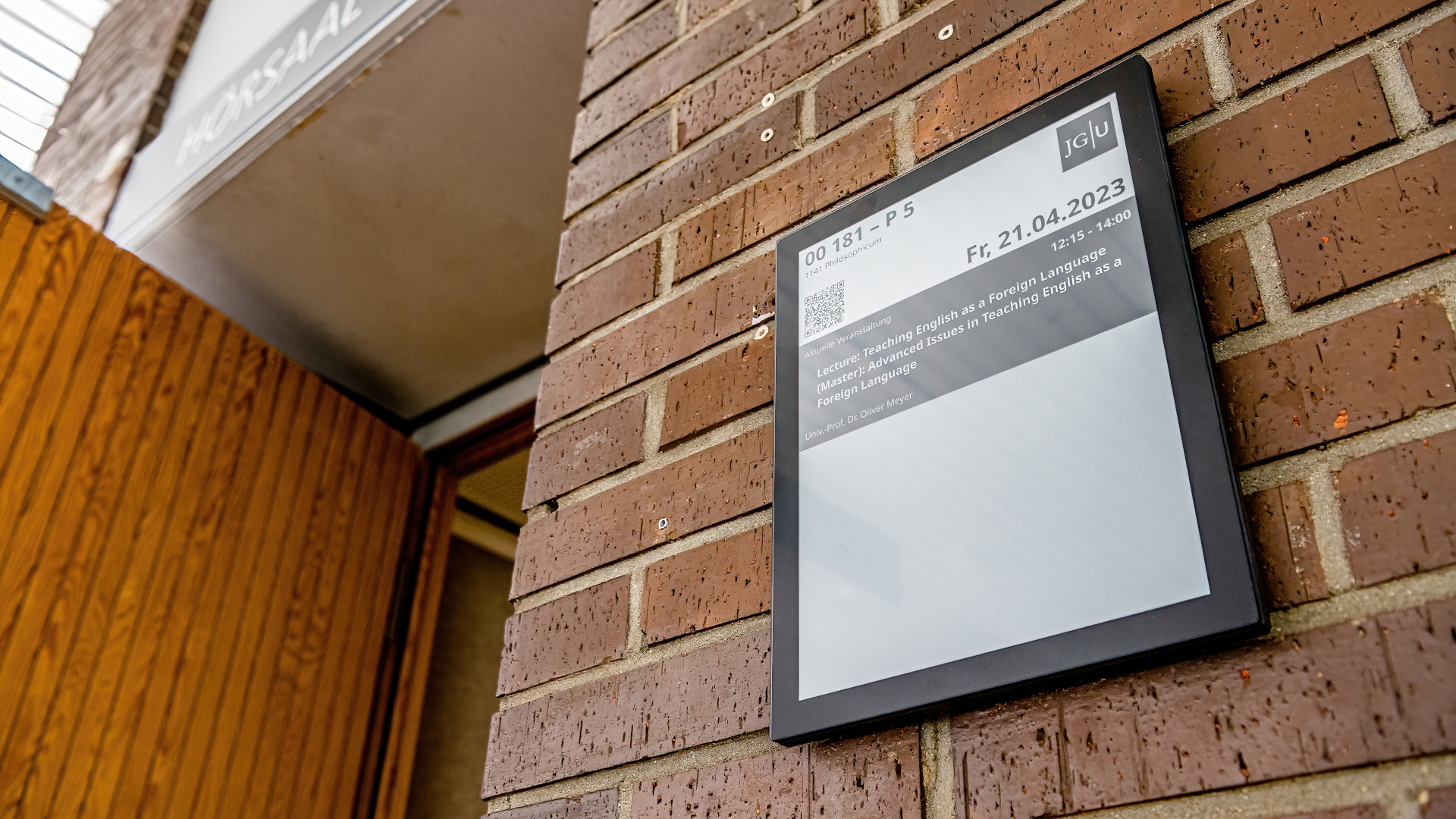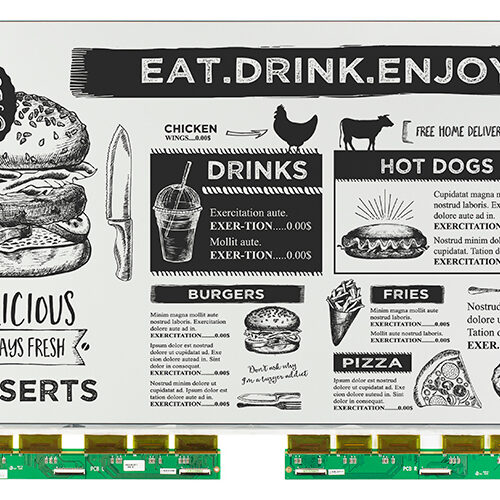BLOG
What Devices Use ePaper Technology?
As technology continues to evolve, ePaper has established itself as a transformative solution with applications extending far beyond traditional e-readers such as the Amazon Kindle. This display technology, often powered by E Ink, is now integrated into a wide array of devices. Let us explore the diverse range of products that utilize the benefits of ePaper technology.
Keywords
- E Ink & ePaper
- Digital Signage
- Outdoor Signage
- E-Readers & Store Signs
Category
- Solution
- Technology

What is ePaper Technology?
ePaper displays mimic the appearance of ink on paper, offering a high-contrast, low-power, and glare-free reading experience. Unlike traditional LCD or OLED screens, ePaper does not emit light directly. Instead, it reflects ambient light – much like printed paper – making it highly readable even in direct sunlight and much easier on the eyes. Because it only consumes power when the display content changes, ePaper is ideal for applications where content remains static for extended periods.
Key Benefits of ePaper Displays:
- Energy Efficiency: Extremely low power consumption.
- Readability: Excellent visibility under bright lighting conditions.
- Eye Comfort: No backlight reduces eye strain during prolonged use.
- Wide Viewing Angles: Content remains legible from various perspectives.
Indoor Solutions
ePaper displays are increasingly used in indoor signage applications across a variety of professional, educational, and public environments due to their clarity, flexibility, and energy efficiency.
In corporate settings, ePaper panels are ideal for displaying meeting room schedules and managing flexible workspaces. When paired with RGB smart lighting, they can visually indicate room availability in real time, enhancing space utilization and minimizing booking conflicts.
In museums and galleries, such as the Estonian National Museum, ePaper enables multilingual exhibit descriptions that can be updated dynamically to support several exhibitions and languages without the need for physical reprinting. Their sleek, paper-like appearance also blends seamlessly with curated environments.
Educational institutions benefit from ePaper for displaying lecture schedules, campus announcements, and wayfinding information. Their low power consumption allows for deployment across large campuses with minimal maintenance. This is illustrated by the JGU Mainz ePaper signage installation near Frankfurt in Germany.
In healthcare environments, such as the Uniklinik Münster in Germany, ePaper signage supports patient information displays, directional guidance, and departmental updates. Its non-emissive nature reduces glare and contributes to a calmer atmosphere, while its reliability ensures consistent communication in high-traffic areas.

Outdoor Signage
Outdoor signage is one of the most promising and rapidly expanding applications of ePaper technology. Traditional digital displays used for public information and advertising often struggle with visibility under direct sunlight, require constant power, and generate significant heat. In contrast, ePaper displays offer unparalleled advantages in outdoor environments, making them an increasingly preferred solution for smart cities, transportation hubs, retail spaces, and public institutions.
One of the key strengths of ePaper in outdoor signage is its exceptional readability in bright ambient light. Unlike conventional LCD or LED displays, which can appear washed out or difficult to read under direct sunlight, ePaper reflects natural light just like printed paper. This ensures that text and graphics remain sharp, high-contrast, and legible at all times – regardless of lighting conditions. Furthermore, it doesn’t create visual noise and emit light, thus, it is frequently used in old city centers or UNESCO sites.
Moreover, ePaper displays consume power only when the screen content is updated. This ultra-low power feature makes them especially suitable for signage that displays static or infrequently changing information.
In addition to energy efficiency and visibility, ePaper displays are also durable and weather-resistant, with many models designed to function reliably in a wide range of environmental conditions, including extreme temperatures, humidity, and exposure to UV light. These features reduce maintenance needs and extend the lifespan of the display systems. Furthermore, the digital nature of ePaper signage allows for remote content management and real-time updates. Municipal authorities, transit operators, and advertisers can deploy content centrally and dynamically, reducing the need for manual updates and ensuring that information remains accurate and timely.
E-Readers
E-readers stand as one of the earliest applications of ePaper technology, fundamentally reshaping how people read and access written content. Devices such as the iconic Amazon Kindle, along with others like the Kobo and Barnes & Noble Nook, have become household names for digital reading enthusiasts around the world.
At the heart of these devices lies the ePaper display, which closely replicates the look and feel of traditional ink on paper. This distinctive feature provides a glare-free, high-contrast reading experience, even under direct sunlight – an area where conventional screens with backlights often fall short. Whether reading at the beach, on a park bench, or near a bright window, users can enjoy a consistently comfortable visual experience.
Beyond visibility, one of the advantages of ePaper in e-readers is its remarkable energy efficiency. Unlike LCD or OLED screens that require constant backlight, ePaper consumes power only when the display changes – for example, when turning a page. This design significantly extends battery life, allowing many e-readers to operate for weeks on a single charge, making them exceptionally convenient for travel and everyday use.
Eye comfort is another compelling benefit. ePaper screens do not emit light in the same way traditional displays do, reducing eye strain during extended reading sessions. This makes e-readers particularly appealing to book lovers, students, and professionals who spend long periods reading digital content.
Consumer Products
ePaper displays are increasingly being integrated into consumer devices where energy efficiency and visibility are essential. In environmental sensors, such as indoor temperature and humidity monitors, ePaper enables clear, real-time data display while minimizing power consumption. Similarly, in personal mobility devices like bicycles and scooters, ePaper provides easily readable battery and performance indicators.
In wearable technology, such as smartwatches, ePaper significantly extends battery life and ensures excellent readability in all lighting conditions, including direct sunlight. These applications highlight ePaper’s potential to enhance user experience while supporting sustainable, low-power product design.

Store Signs
Retailers are increasingly turning to E Ink technology, especially to color E Ink displays, for their in-store signage needs. ePaper displays offer flexibility in showcasing product information, promotions, and pricing with minimal energy consumption. Whether mounted on shelves or integrated into product displays, these signs capture customers’ attention without overwhelming them with unnecessary glare or distractions.
Additionally, the ability to update content remotely in real-time ensures that pricing and promotional information is always up-to-date, reducing the need for manual updates and printing costs. This adaptability not only enhances the customer experience but also supports sustainable practices by minimizing paper waste and energy usage
Conclusions
ePaper technology has transcended its origins in e-readers to become a powerful tool for energy-efficient, high-visibility display solutions across a growing number of devices. Whether you’re writing down notes on a digital notepad, checking a bus schedule, or browsing store shelves, chances are you’re interacting with devices that use ePaper technology in more ways than you realize.
As demand for sustainable and user-friendly interfaces grows, so too will the role of ePaper in shaping the future of digital interaction.





